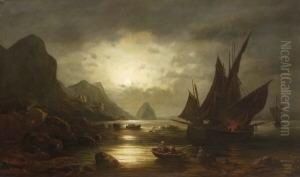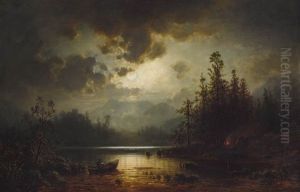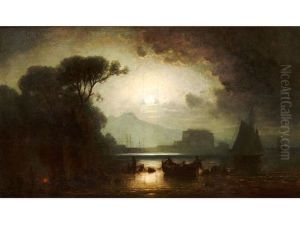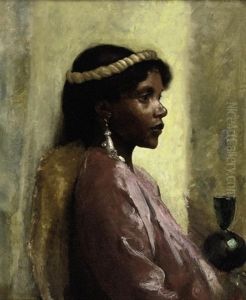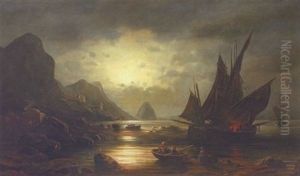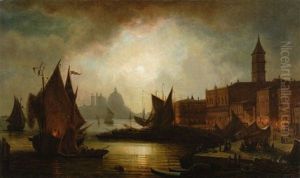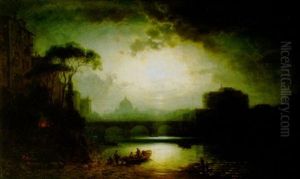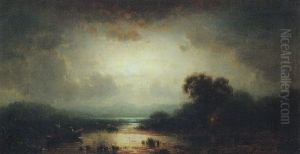Tobias Andreae Paintings
Tobias Andreae was a notable figure in the 19th-century European art scene, known primarily for his contributions to painting and printmaking. Born in 1823, Andreae grew up in a period marked by significant social and political changes, which influenced the themes and styles of his artwork. Although not as widely recognized as some of his contemporaries, Andreae's work provides a fascinating insight into the cultural and aesthetic shifts of his time.
Throughout his career, Andreae was deeply engaged with the Romantic movement, which was sweeping across Europe. His works often depicted natural landscapes and historical themes, imbued with a sense of emotion and introspection characteristic of Romanticism. Andreae was particularly adept at capturing the sublime beauty of nature, using a palette and techniques that highlighted the dramatic and moody aspects of his subjects.
Andreae's journey as an artist was marked by his travels across Europe, where he absorbed various influences and honed his craft. He spent considerable time in Italy and France, two countries that were at the forefront of artistic innovation during his lifetime. The influence of Italian Renaissance and French Barbizon School is evident in Andreae's approach to composition and his use of light and shadow. Despite these influences, Andreae maintained a distinctive style that set his work apart from his peers.
Later in his career, Andreae also explored printmaking, which allowed him to reach a broader audience. His prints, much like his paintings, are characterized by their attention to detail and the ability to evoke a sense of depth and atmosphere. Andreae's contributions to printmaking are considered significant, particularly in the context of the revival of interest in etching and lithography among artists of his time.
Tobias Andreae passed away in 1906, leaving behind a legacy that, while perhaps not as celebrated as that of some of his contemporaries, offers valuable insights into the evolution of 19th-century European art. His work continues to be studied and appreciated by art historians and enthusiasts for its emotional depth and technical prowess.
